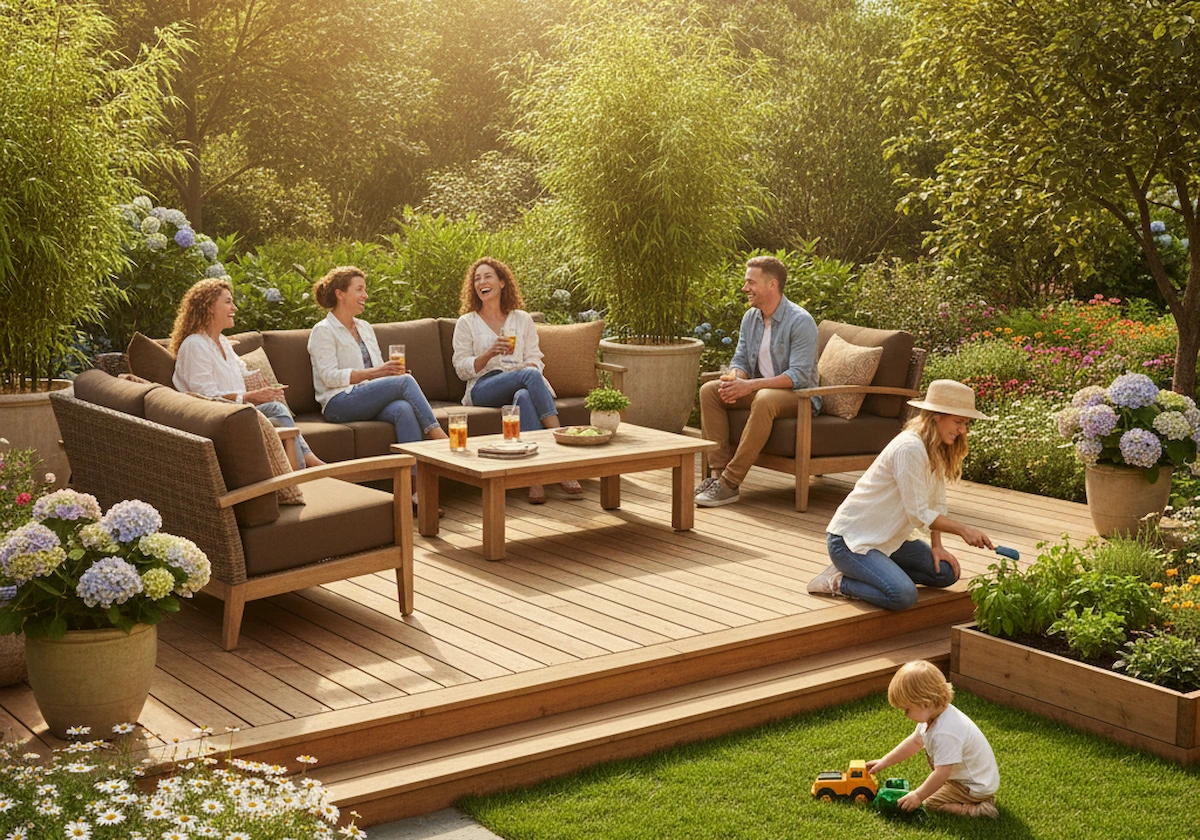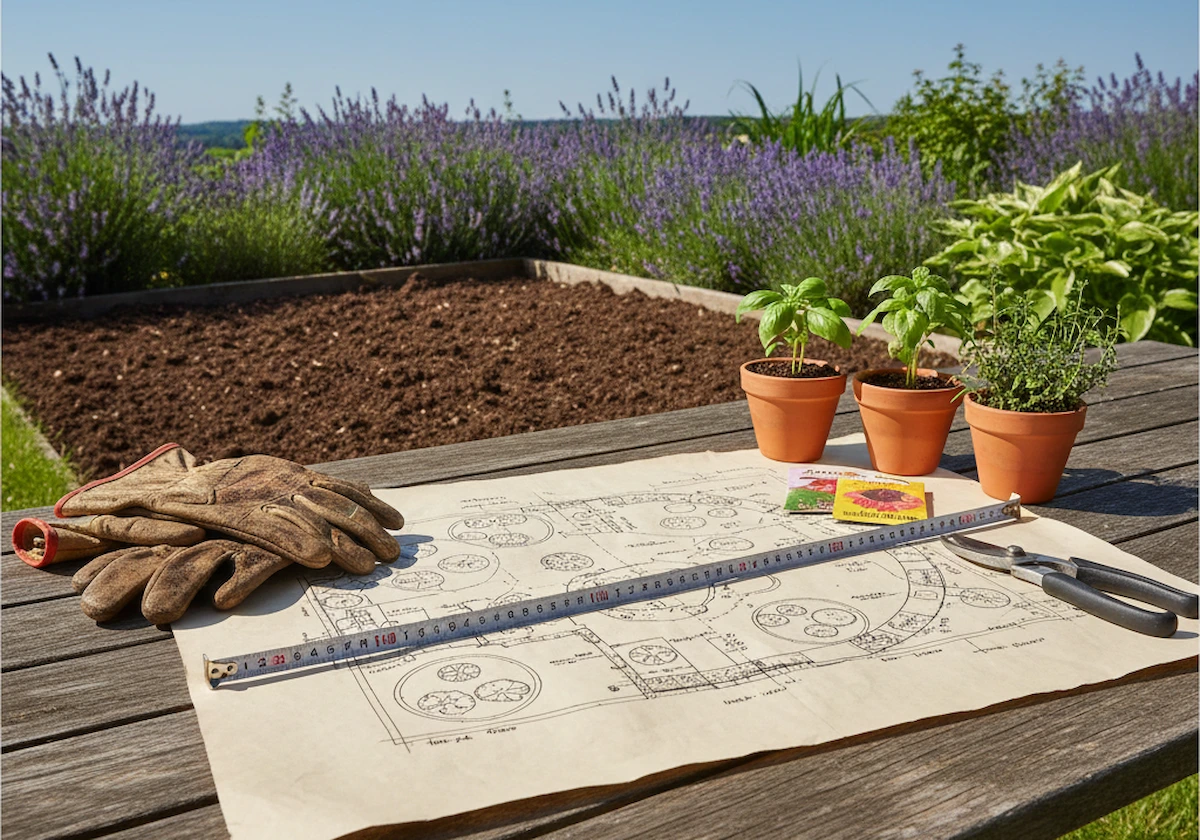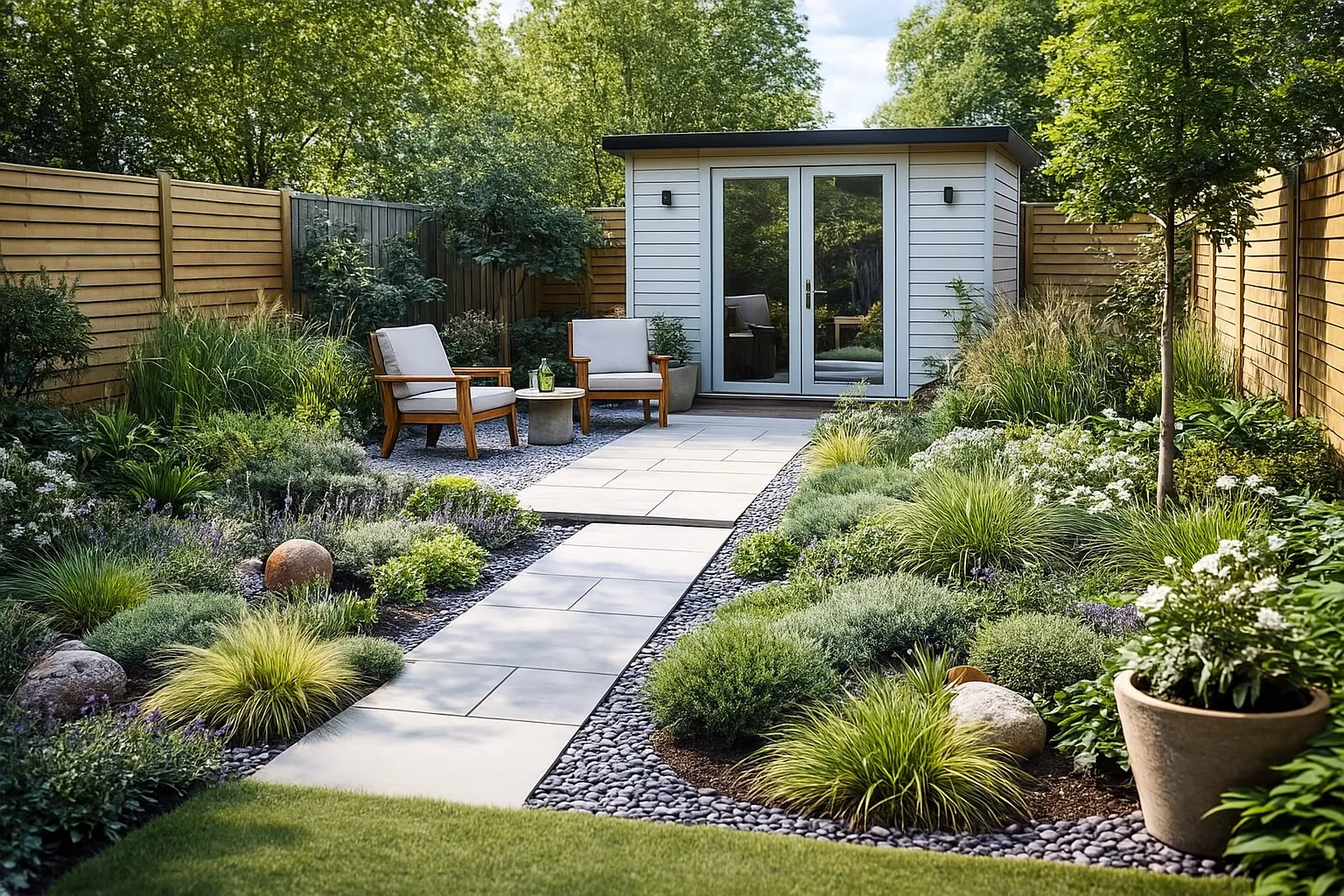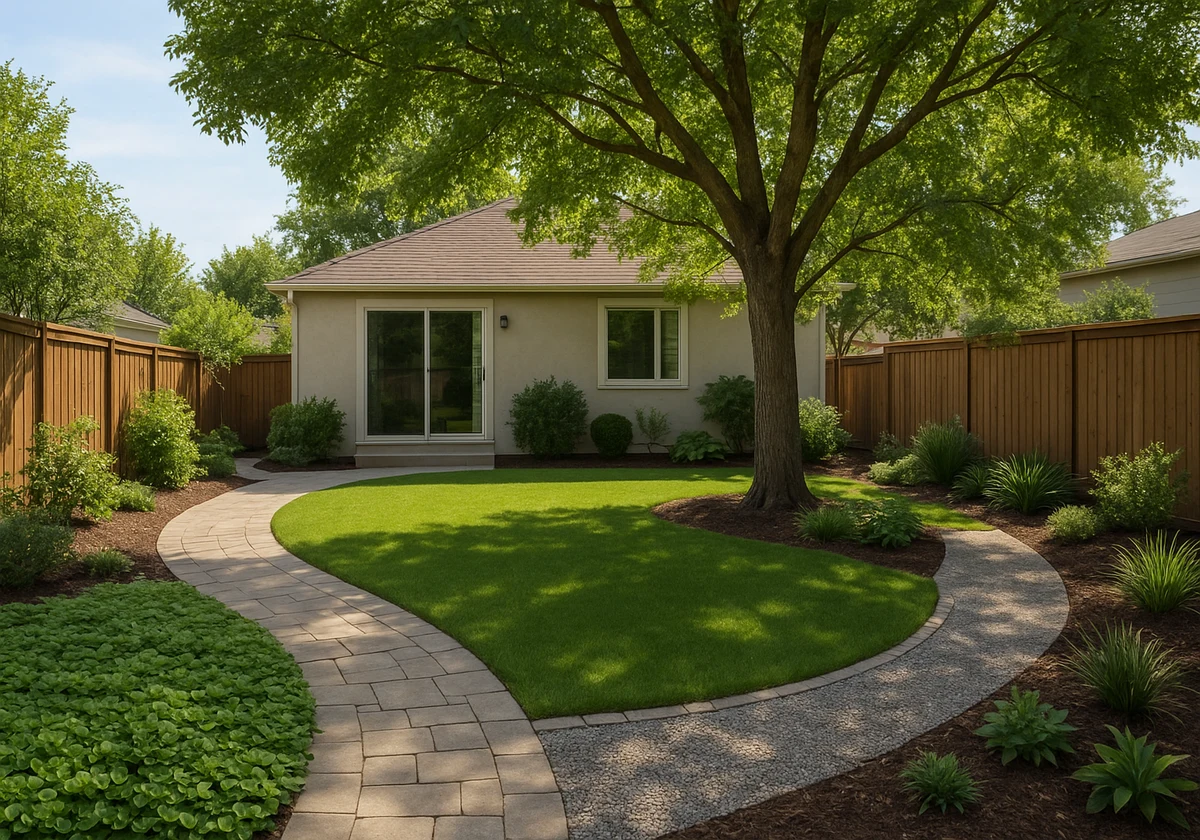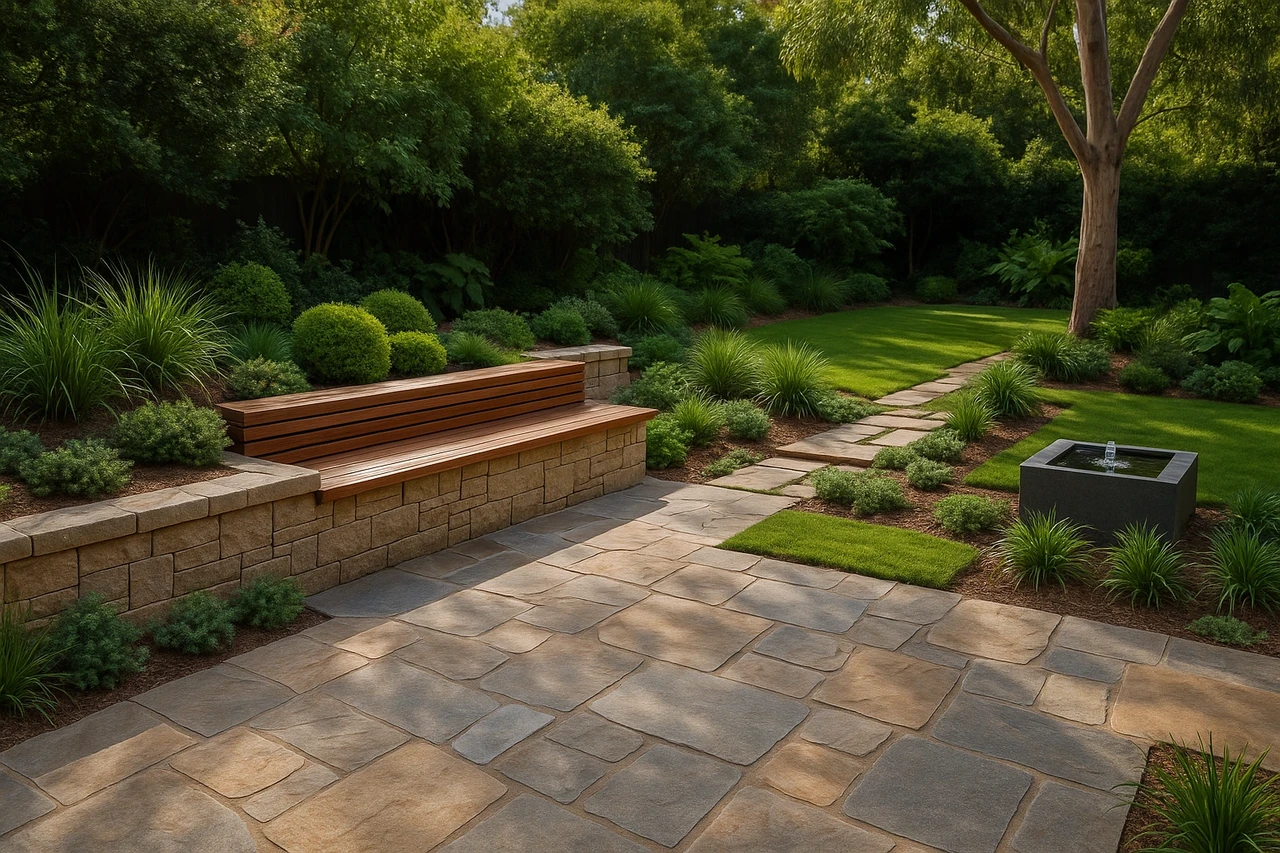A beautifully designed outdoor space is more than just a garden—it’s an extension of your home, a sanctuary for relaxation, and a gathering place for family and friends.
Yet, many homeowners struggle with turning their outdoor areas into functional, aesthetically pleasing spaces. Whether it’s a lack of inspiration, poor planning, or uncertainty about plant selection, creating the perfect landscape design can feel overwhelming.
Yet, many homeowners struggle with turning their outdoor areas into functional, aesthetically pleasing spaces. Whether it’s a lack of inspiration, poor planning, or uncertainty about plant selection, creating the perfect landscape design can feel overwhelming.
But what if you could transform your outdoor space with a clear, step-by-step approach? This guide walks you through essential landscape design principles, from understanding your space and developing a master plan to choosing the right plants and incorporating sustainable solutions. With a balanced blend of creativity and professional planning, you can craft an outdoor oasis that’s not only stunning but also practical and long-lasting.
Understanding Your Outdoor Space in Landscape Design
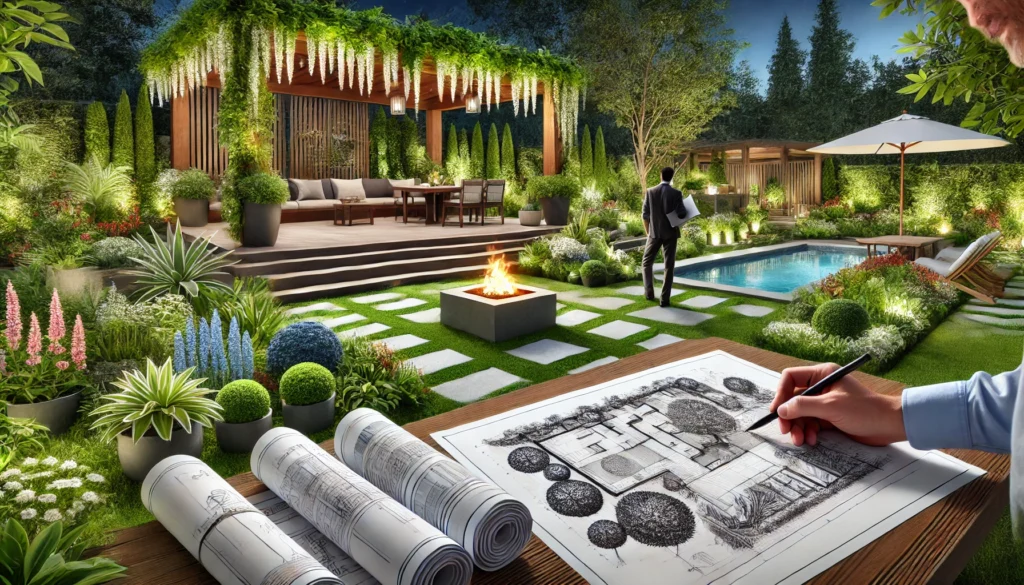
Creating a successful landscape design begins with a deep understanding of your outdoor space. Every landscape is unique, and influenced by various environmental factors, structural elements, and homeowner preferences.
By assessing these aspects early in the design process, you can make informed choices that enhance both beauty and functionality. Whether you’re working with a small urban garden or a sprawling backyard, the key to success is recognising opportunities and limitations before implementing any changes.
Key Aspects to Evaluate
- Sunlight exposure: Identify areas that receive full sun, partial shade, or full shade to determine optimal plant placement.
- Soil type: Conduct a soil test to determine pH levels and nutrient content, ensuring plant compatibility.
- Drainage and slopes: Poor drainage? Consider raised beds or French drains to prevent waterlogging.
- Existing features: Integrate trees, slopes, and structures rather than removing them, preserving the natural aesthetic.
Developing a Functional Landscape Design Strategy
A functional landscape design is more than just aesthetics—it is about making your outdoor space work for you. Whether you dream of a peaceful retreat, a lively entertainment space, or a productive vegetable garden, a well-structured plan ensures every square foot serves a purpose. Thoughtful zoning, accessibility, and natural flow can transform an ordinary yard into a multi-functional haven that meets your personal and practical needs.
How to Zone Your Space:
- Entertainment area: Ideal for patios, outdoor kitchens, and fire pits.
- Relaxation zone: Perfect for hammocks, shaded seating, or water features.
- Gardening space: Use raised beds, trellises, or vertical gardens for optimal planting.
Creating Connectivity with Pathways:
- Curved paths: Add visual interest and create a more organic look.
- Straight pathways: Provide a structured, formal appearance.
- Natural stone or gravel: Offer a durable yet aesthetic option while maintaining a natural feel.
Hardscaping and Outdoor Structures in Landscape Design
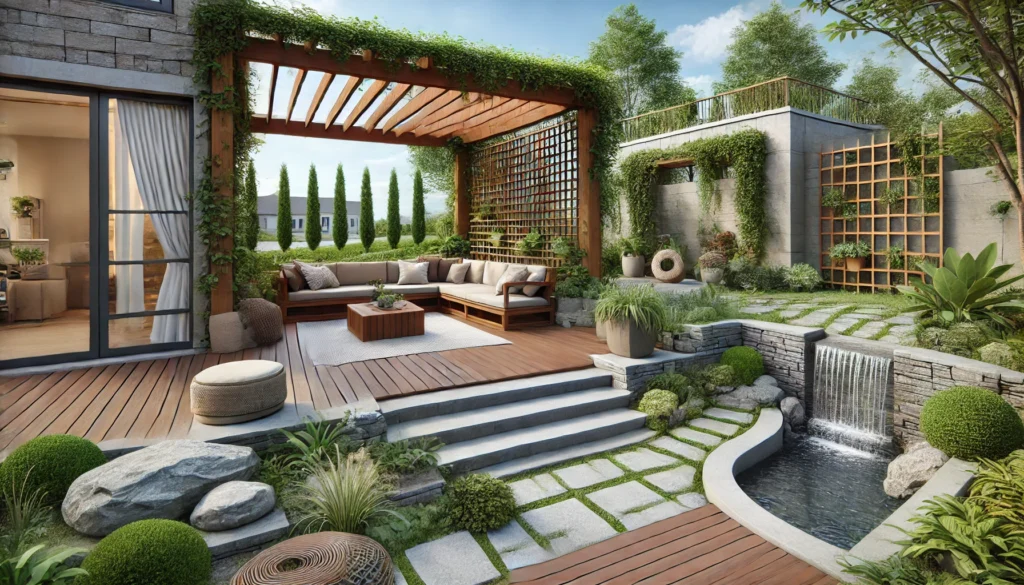
Hardscaping serves as the backbone of your landscape design, providing essential structure and durability. For example, a homeowner in California transformed their backyard by incorporating a stone patio with built-in seating and a fire pit, turning an unused space into a functional and inviting entertainment hub.
Such strategic hardscaping elements not only enhance usability but also increase property value and reduce long-term maintenance., providing structure, durability, and functionality.
It encompasses elements such as patios, pathways, retaining walls, and pergolas that add depth and usability to your outdoor space. Incorporating the right hardscape features enhances accessibility, creates designated zones, and minimises maintenance while increasing property value.
Popular Hardscaping Features & Benefits:
Choosing the Right Plants and Greenery
Plant selection is at the heart of every landscape design, and climate considerations play a crucial role in determining which plants will thrive in your specific environment. Understanding local temperature patterns, seasonal rainfall, and soil conditions ensures that your chosen greenery remains healthy and vibrant year-round, dictating how the space will look, function, and evolve over time. Plants provide colour, texture, shade, privacy, and even food. The right combination of plants will not only enhance aesthetics but also ensure that your garden remains vibrant throughout the year with minimal upkeep.
Best Practices for Plant Selection:
- Native plants require 50% less water than non-native species (EPA).
- Layered planting: Use tall trees for privacy, mid-sized plants to fill gaps, and ground cover to prevent soil erosion.
- Pollinator-friendly gardens: Lavender, echinacea, and salvia attract bees and butterflies, boosting biodiversity.
- Seasonal planning: Ensure your garden remains vibrant with a mix of evergreens, perennials, and annuals.
The Role of Outdoor Lighting in Landscape Design
Lighting is often overlooked in landscape design, yet it plays a crucial role in setting the mood, improving safety, and highlighting architectural and natural features. Well-placed lighting ensures that your outdoor space remains functional after sunset while also enhancing its visual appeal, yet it plays a crucial role in enhancing both aesthetics and functionality. Proper lighting extends the usability of your outdoor space into the evening, increases security, and highlights key design features. The placement of lighting should be strategic, ensuring the right balance between ambience and practicality.
Types of Landscape Lighting:
- Pathway Lighting: Low-voltage LED lights improve safety and guide movement.
- Ambient Lighting: String lights and lanterns create a warm and inviting atmosphere.
- Accent Lighting: Spotlights highlight trees, architectural features, and water elements.
Sustainable and Eco-Friendly Landscape Design
A truly exceptional landscape design is one that not only enhances beauty but also promotes sustainability. By making eco-friendly choices, you can reduce your environmental impact, lower maintenance efforts, and create a space that thrives naturally with minimal intervention.
Eco-Friendly Strategies:
- Rainwater harvesting: Collect rainwater in barrels or underground tanks to irrigate plants.
- Permeable paving: Gravel or permeable concrete prevents runoff, reducing soil erosion.
- Native planting: Reduces fertiliser and pesticide dependency, promoting ecological balance.
Maintenance Tips for a Long-Lasting Outdoor Space
A stunning landscape design requires ongoing care to maintain its beauty and functionality. Common maintenance mistakes include overwatering, neglecting seasonal pruning, and failing to replenish mulch, all of which can lead to plant stress and soil degradation. Ignoring proper drainage solutions can also cause water buildup, leading to root rot and landscape erosion.
To avoid these issues, establish a maintenance routine that includes regular weeding, soil testing, and hardscape inspections to ensure long-term durability and health for your outdoor space. Regular upkeep ensures that plants remain healthy, hardscape elements stay intact, and your outdoor space continues to reflect your original vision.
Seasonal Maintenance Checklist:
- Spring: Prune trees, fertilise plants, and add mulch.
- Summer: Monitor watering, control weeds, maintain lawn.
- Autumn: Rake leaves, aerate the soil, and prepare for winter.
- Winter: Protect plants, store outdoor furniture, plan next season’s projects.
Bringing Your Landscape Vision to Life with Expert Guidance
Every successful landscape design starts with a well-thought-out plan and the right expertise. Whether you’re aiming for a low-maintenance retreat, a vibrant floral paradise, or an outdoor entertainment hub, the key is in the details. Working with a professional landscape designer ensures that your space is optimised efficiently and tailored to your lifestyle.
Start planning today and take the first step toward a stunning, functional outdoor space that you’ll enjoy for years to come.




